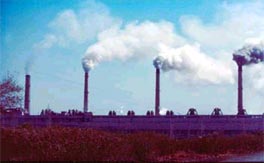Policing carbon markets
Carbon markets have emerged in recent decades as one of the most important tools for curbing industrial greenhouse gas emissions, but they present a number of novel enforcement challenges when compared
Carbon markets have emerged in recent decades as one of the most important tools for curbing industrial greenhouse gas emissions, but they present a number of novel enforcement challenges when compared
The Emissions Trading System (EU-ETS) is Europe
International transport, both aviation and maritime shipping, is a critical element of the global economy and trade. At the same time, it is also one of the main drivers of human-induced climate change. This background paper is intended to explore the many aspects of regulating international transport emissions in the context of trade.

<p>This briefing illustrates how HFC-23 projects under the CDM are working directly against the objectives of the UNFCCC and the Montreal Protocol, which is working to phase out HCFCs. HFC-23 emissions are clearly best addressed through direct measures outside the CDM.

This fourth annual

This recent study analyses the economic and political consequences of introducing a tax on the carbon content of imported goods at EU borders and whether such a tax would be compatible with WTO rules.

The World Bank released its annual State and Trends of the Carbon Market report at Carbon Expo in Cologne, Germany, on 26 May. The report indicates that the value of the global carbon market grew six percent, to US$144 billion, in 2009 despite being its most challenging year to date.
What are the main trends in the carbon market in 2010? What do market participants and observers expect this year, the next few years and up to 2020? This report presents and analyses the results of the fifth annual Carbon Market Survey, which garnered 4,767 responses in January and February 2010.
This paper provides the latest developments of announced, proposed and existing greenhouse gas emissions trading schemes (ETS) around the world since 2006. It also examines different potential design options for ETS (e.g. coverage, allocation mode, provision for offsets), and how these options are treated in the existing, announced or proposed schemes.
Coal is the biggest single source of energy for electricity production and its share is growing. The efficiency of converting coal into electricity matters: more efficient power plants use less fuel and emit less climate-damaging carbon dioxide. This report explores how efficiency is measured and reported at coal-fired power plants.